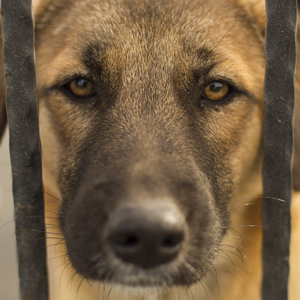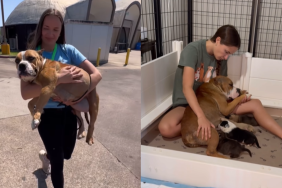Each year, an estimated 4 million animals are euthanized in animal shelters in the United States. One of the greatest obstacles to saving the lives of homeless cats and dogs is that myths still persist about these pets most in need of homes. This month, we are setting out to dispel these falsehoods and help people learn that adopting a pet can be a wonderful experience for them and a life-saving experience for a lucky animal.
This is the first in a four-part series to run throughout February, which is also Spay & Neuter Awareness Month.
Shelter dog myth #1: “Dogs at the shelter are there because something is wrong with them.”
It’s a common misperception that the dogs found in shelters are there because they were rejected by their first families for a “good reason.” And while this is sometimes the case (and these incidences vary by region), it’s not usually not a line that can be accurately applied to most dogs in the parts of the country with the highest overpopulation problem.
So why would someone turn in a perfectly nice pet to an animal shelter? Generally speaking, the answer is a combination of factors, but it can be found in one of the following reasons:
- Finding pet-friendly housing can be challenging, especially for owners of large breed dogs or multiple pets. Restrictions from landlords, breed discriminatory homeowner insurance policies, and exorbitant pet deposits can create a tremendous challenge for families looking to bring pets with them in a move to a new home.
- Veterinary care can be expensive. A single medical bill can run into the thousands of dollars for an accidental injury or major dental cleaning. For a low-income family or senior citizen on a fixed income, the decision may be made that it’s kinder to the animal to give it to a shelter where it can receive proper care, rather than hold onto it while they struggle to come up with needed funds.
- This particular dog was not a good fit for the household. Maybe the little black puppy they found at the flea market grew up to be a Border Collie in a tiny apartment. Maybe the fragile Yorkie was nervous around rowdy toddlers. Maybe someone thought a Vizsla puppy would be a good companion for grandma. It doesn’t mean there was something wrong with the actual dog, just the match wasn’t what the family had in mind when they first brought their furry friend home.
- There are just too many. This, along with irresponsible breeding practices (such as backyard breeding and puppy mills) is the most common reason for full shelters in parts of the country with large dog populations. In an area with fewer unwanted dogs, a found pup might be quickly adopted into a loving family. However, in an area where stray dogs are common, so is indiscriminate breeding and the resulting puppies. In some parts of the country, as many as 40 percent of the homes will bring an unwanted cat or dog to their local shelter every year because there are simply so many in the streets.
There are exceptions to these reasons, of course, but more often than not, it is not the animal’s fault they found themselves homeless. The only thing wrong with your average shelter dog is they haven’t been given the chance to find you yet.
Other stories in this series:
Dispelling shelter dog myth #2: “It’s how they were raised.”
Dispelling shelter dog myth #3: “You aren’t going to find what you are looking for in a shelter.”
Dispelling shelter dog myth #4: “Animal shelters are too depressing.”









